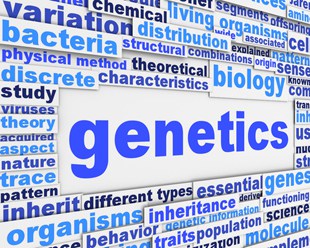Does my DNA Increase My Risk of Developing Osteoporosis?
Osteoporosis, like disorders such as heart disease and diabetes is a multi-factorial condition. This means that individuals often have genes which make them susceptible to developing the disorder and then exposure to other influences such as environmental factors create the conditions that the disorder needs to develop.
DNA is within almost every cell in the body and it is DNA that contains the biological instructions passed on from generation to generation, allowing us to develop, survive and reproduce. DNA largely determines our appearance and is found in lengths called genes. Humans have around 20,000 to 25,000 genes, although these only include around 3% of our total DNA. Our genes are packaged up in structures called chromosomes, of which we have 23 from our biological father and 23 from our mother (making 46 in total or 23 pairs).
Our peak bone mass, which is usually achieved by the age of 30, is largely determined by our gender and our genes. 14 genetic variants were identified by researchers in 2012 as contributing to the increased risk of osteoporosis in 80,000 women. Researchers have also observed lower peak bone mass in the daughters of women with osteoporosis and that those who have a family history of hip fracture have double the risk of having a fracture that is age-related.
Some of the genes associated with bone mineral density and osteoporosis risk includes the vitamin D receptor (VDR) gene. Individuals with specific variations (or polymorphisms) of VDR have higher risk of early spinal fractures and a four time greater risk of hip fractures, when compared with individuals without these genetic variations. Around 2% of the mutations in genes COL1A1 and COL1A2 (which are involved in collagen production) are also associated with osteoporosis.
Estrogen assists in the regulation of bone mineral density, so as estrogen levels decline with the onset of the menopause, so the reduction in bone density occurs. The estrogen receptor gene (ER) binds to receptors found on osteoblasts (bone cells), which helps explain why declining estrogen levels and lower bone mineral density is linked.
So, depending on your DNA, you could have a higher risk of developing osteoporosis, although being active and making the most of a healthy lifestyle can help to keep this risk to a minimum.
References
- P.Marozik, I.Mosse, M.Ameliyanovich, E.Rudenka, V.Alekna, M.Tamulaitienė. (2011). Molecular and genetic mechanisms of predisposition to osteoporosis. Gerontologija; 12(4): 250–258.
- Rizzoli, R. (2001). Osteoporosis, genetics and hormones. Journal of Molecular Endocrinology, 26(2), 79–94. doi:10.1677/jme.0.0260079
Last Reviewed 13/Mar/2014
